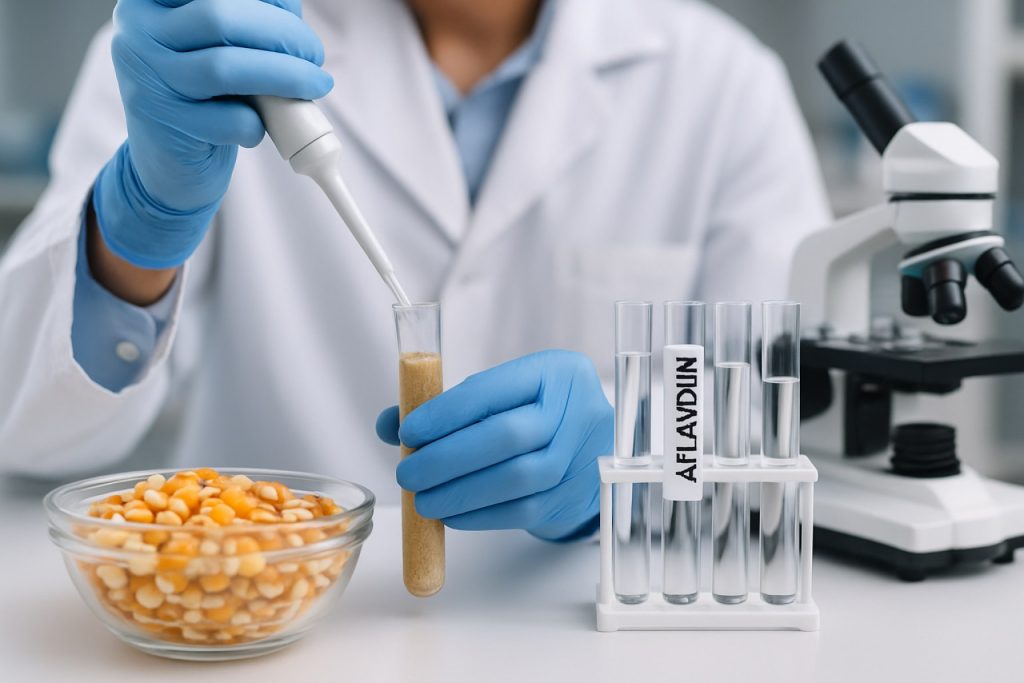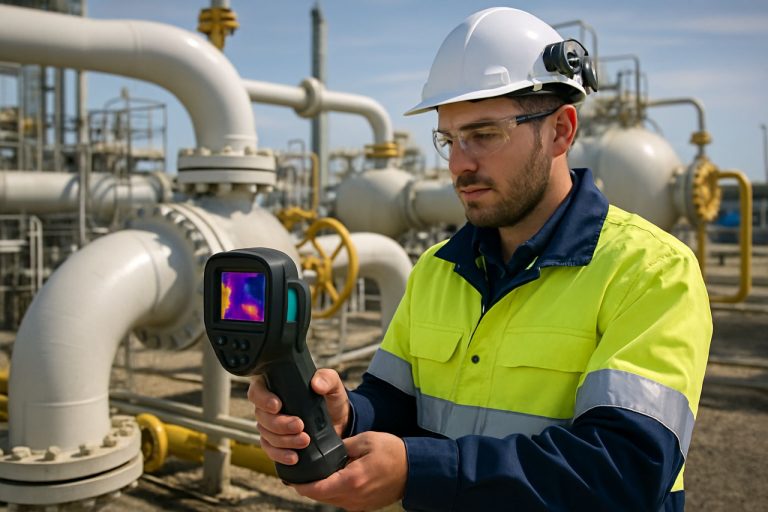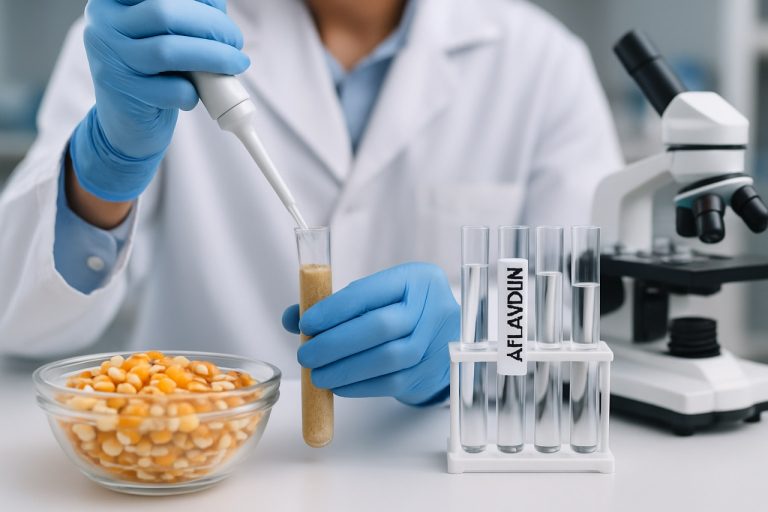
Aflatoxin Detection and Analysis Technologies in 2025: Innovations, Market Dynamics, and the Road to Safer Global Food Chains. Explore the Next Wave of Rapid, Accurate, and Scalable Solutions.
- Executive Summary: Key Trends and Market Drivers
- Global Market Forecasts and Growth Projections (2025–2030)
- Regulatory Landscape and Compliance Requirements
- Emerging Detection Technologies: Biosensors, Immunoassays, and Spectroscopy
- Automation, Digitalization, and AI in Aflatoxin Analysis
- Competitive Landscape: Leading Companies and Strategic Initiatives
- Application Sectors: Food, Feed, Agriculture, and Exports
- Regional Analysis: North America, Europe, Asia-Pacific, and Emerging Markets
- Challenges: Sensitivity, Speed, and Cost in Real-World Testing
- Future Outlook: Innovation Pipelines and Industry Collaboration
- Sources & References
Executive Summary: Key Trends and Market Drivers
Aflatoxin detection and analysis technologies are experiencing significant advancements in 2025, driven by heightened regulatory scrutiny, global food safety concerns, and the increasing complexity of supply chains. The market is witnessing a shift from traditional laboratory-based methods to rapid, on-site, and user-friendly solutions, reflecting the urgent need for real-time monitoring and compliance with stringent aflatoxin limits in food and feed products.
Key trends shaping the sector include the adoption of advanced immunoassay formats, such as lateral flow devices and ELISA kits, which offer rapid screening capabilities with minimal sample preparation. Major industry players like Neogen Corporation and Romer Labs are expanding their portfolios with next-generation test kits that provide improved sensitivity and specificity, catering to both laboratory and field applications. These companies are also integrating digital data management and connectivity features, enabling seamless traceability and compliance reporting.
Another notable trend is the increasing deployment of chromatographic and mass spectrometric techniques, such as LC-MS/MS, for confirmatory analysis. Equipment manufacturers like Agilent Technologies and Shimadzu Corporation are introducing compact, automated systems that reduce analysis time and operator intervention, making high-throughput testing more accessible to food processors and third-party laboratories. The convergence of these technologies with cloud-based platforms is expected to further streamline data sharing and regulatory submissions.
Regulatory agencies worldwide are tightening permissible aflatoxin limits, particularly in emerging markets, prompting food exporters to invest in robust detection infrastructure. Organizations such as the Food and Agriculture Organization of the United Nations and the International Organization for Standardization are updating guidelines and standards, influencing technology adoption patterns across regions.
Looking ahead, the next few years are likely to see increased collaboration between technology providers, food producers, and regulatory bodies to develop harmonized testing protocols and interoperable digital solutions. The integration of artificial intelligence and machine learning for predictive risk assessment and automated result interpretation is anticipated to further enhance the efficiency and reliability of aflatoxin detection workflows. As a result, the sector is poised for continued growth, with innovation focused on speed, accuracy, and regulatory alignment.
Global Market Forecasts and Growth Projections (2025–2030)
The global market for aflatoxin detection and analysis technologies is poised for robust growth between 2025 and 2030, driven by increasing regulatory scrutiny, heightened food safety awareness, and the globalization of agricultural supply chains. Aflatoxins, toxic metabolites produced by certain Aspergillus species, pose significant health risks and economic losses, prompting governments and industry stakeholders to invest in advanced detection solutions.
Key industry players are expanding their portfolios to address the evolving needs of food processors, grain handlers, and regulatory agencies. Neogen Corporation, a leading provider of food safety solutions, continues to innovate in rapid test kits and laboratory-based analytical systems, supporting both qualitative and quantitative aflatoxin detection. Similarly, Romer Labs is recognized for its comprehensive range of mycotoxin test kits, including lateral flow devices and ELISA-based assays, which are widely adopted in grain, nut, and feed testing worldwide.
The adoption of advanced analytical technologies such as liquid chromatography-tandem mass spectrometry (LC-MS/MS) and high-performance liquid chromatography (HPLC) is expected to accelerate, particularly in regions with stringent regulatory frameworks. Companies like Agilent Technologies and Thermo Fisher Scientific are at the forefront, offering high-throughput instruments and validated methods for multi-mycotoxin analysis, including aflatoxins. These platforms enable laboratories to achieve lower detection limits and higher throughput, meeting the demands of both routine monitoring and regulatory compliance.
Emerging economies in Asia-Pacific, Latin America, and Africa are projected to experience the fastest market growth, as governments strengthen food safety standards and invest in laboratory infrastructure. The expansion of international trade in agricultural commodities is also fueling demand for reliable, rapid, and portable aflatoxin detection tools. Companies such as Megazyme and Bio-Rad Laboratories are responding with user-friendly test kits and portable devices suitable for on-site screening at points of harvest, storage, and processing.
Looking ahead, the integration of digital technologies—such as cloud-based data management and artificial intelligence for result interpretation—is anticipated to enhance the efficiency and traceability of aflatoxin testing workflows. Industry collaborations and public-private partnerships are likely to accelerate the development and deployment of next-generation detection platforms, supporting global efforts to mitigate aflatoxin risks and ensure food safety.
Regulatory Landscape and Compliance Requirements
The regulatory landscape for aflatoxin detection and analysis technologies is rapidly evolving in 2025, driven by heightened global awareness of food safety and stricter compliance requirements. Regulatory agencies such as the U.S. Food and Drug Administration (FDA), the European Food Safety Authority (EFSA), and the Codex Alimentarius Commission continue to set maximum allowable limits for aflatoxins in food and feed, prompting the adoption of advanced detection technologies across the supply chain.
In the United States, the FDA enforces aflatoxin limits in various commodities, including nuts, grains, and dairy products, necessitating the use of validated analytical methods. The agency recognizes methods such as high-performance liquid chromatography (HPLC), enzyme-linked immunosorbent assay (ELISA), and liquid chromatography-tandem mass spectrometry (LC-MS/MS) for regulatory compliance. The European Union, through EFSA, maintains some of the world’s strictest aflatoxin limits, particularly for products intended for infants and young children, and mandates regular monitoring using accredited laboratories and standardized protocols.
To meet these regulatory demands, technology providers are innovating with rapid, sensitive, and user-friendly detection platforms. Companies like Neogen Corporation and Romer Labs are at the forefront, offering a range of test kits and analytical services that comply with international standards. Neogen, for example, supplies both ELISA-based and lateral flow test kits for on-site screening, as well as reference laboratory services for confirmatory analysis. Romer Labs specializes in immunoassay and chromatographic solutions, supporting compliance with EU and Codex regulations.
In Asia and Africa, where aflatoxin contamination poses significant public health risks, governments are increasingly aligning their regulations with international benchmarks. This trend is fostering partnerships with global technology suppliers and the establishment of accredited testing laboratories. Organizations such as the International Crops Research Institute for the Semi-Arid Tropics (ICRISAT) are collaborating with local authorities to implement cost-effective, field-deployable detection methods, supporting compliance and export market access.
Looking ahead, regulatory agencies are expected to further tighten aflatoxin limits and expand surveillance programs, especially in response to climate change-driven shifts in contamination patterns. The next few years will likely see increased adoption of digital traceability systems and blockchain integration to document compliance throughout the supply chain. Technology providers are responding by developing multiplex assays and portable devices that enable real-time, in-field testing, ensuring that producers and processors can meet evolving regulatory requirements efficiently and reliably.
Emerging Detection Technologies: Biosensors, Immunoassays, and Spectroscopy
The landscape of aflatoxin detection and analysis is rapidly evolving in 2025, driven by the need for faster, more sensitive, and field-deployable solutions. Traditional chromatographic methods such as HPLC and LC-MS/MS remain the gold standard for regulatory compliance, but emerging technologies—particularly biosensors, advanced immunoassays, and spectroscopy—are reshaping the sector with their potential for real-time, on-site analysis.
Biosensor technologies are at the forefront of this transformation. Electrochemical, optical, and piezoelectric biosensors are being developed to detect aflatoxins with high specificity and sensitivity. Companies like Neogen Corporation and R-Biopharm AG are actively commercializing biosensor-based kits and devices, focusing on rapid detection in grains, nuts, and dairy products. These biosensors often utilize aptamers or antibodies as recognition elements, enabling detection limits in the low parts-per-billion (ppb) range, which is critical for compliance with stringent international regulations.
Immunoassay platforms, particularly lateral flow devices and ELISA kits, continue to gain traction due to their ease of use and adaptability for field testing. Romer Labs and EnviroLogix Inc. are notable for their robust portfolios of rapid immunoassay solutions, which are widely adopted by food processors and grain handlers. These assays are being enhanced with multiplexing capabilities, allowing simultaneous detection of multiple mycotoxins, and are increasingly integrated with smartphone-based readers for digital data capture and traceability.
Spectroscopy-based methods, including near-infrared (NIR), mid-infrared (MIR), and Raman spectroscopy, are emerging as powerful tools for non-destructive, high-throughput screening. Companies such as Bruker Corporation and PerkinElmer Inc. are advancing portable and benchtop spectrometers tailored for aflatoxin analysis. These instruments leverage chemometric algorithms to rapidly screen large sample volumes, making them attractive for grain elevators and export terminals. Recent advances in hyperspectral imaging are also enabling spatial mapping of contamination within bulk commodities.
Looking ahead, the integration of these technologies with cloud-based data management and blockchain traceability is expected to become standard practice by 2027. This will facilitate real-time monitoring across supply chains and support compliance with tightening global regulations. The convergence of biosensors, immunoassays, and spectroscopy—combined with digital connectivity—positions the sector for significant improvements in food safety, risk management, and operational efficiency in the coming years.
Automation, Digitalization, and AI in Aflatoxin Analysis
The landscape of aflatoxin detection and analysis is undergoing rapid transformation in 2025, driven by advances in automation, digitalization, and artificial intelligence (AI). These technologies are addressing longstanding challenges in food safety, such as the need for faster, more sensitive, and scalable aflatoxin testing across global supply chains.
Automated sample preparation and analysis systems are increasingly being adopted by laboratories and food producers to streamline workflows and reduce human error. Leading instrument manufacturers such as PerkinElmer and Agilent Technologies have integrated robotics and automated liquid handling into their chromatography and immunoassay platforms, enabling high-throughput aflatoxin screening with minimal manual intervention. These systems are capable of processing hundreds of samples per day, supporting the growing demand for routine monitoring in grains, nuts, spices, and dairy products.
Digitalization is further enhancing the reliability and traceability of aflatoxin analysis. Cloud-based laboratory information management systems (LIMS) are now standard in many testing facilities, allowing for real-time data capture, remote monitoring, and secure sharing of results. Companies like Thermo Fisher Scientific offer integrated LIMS solutions that connect analytical instruments, automate result reporting, and facilitate compliance with international regulatory standards.
AI and machine learning are emerging as transformative tools in aflatoxin detection. In 2025, AI-powered image analysis is being deployed in rapid test kits and portable devices, enabling on-site screening with smartphone-based readers. For example, Neogen Corporation and Romer Labs are developing lateral flow and ELISA test kits that leverage digital readers and cloud connectivity for instant quantification and data logging. AI algorithms are also being trained to interpret complex chromatographic and spectroscopic data, improving the accuracy of aflatoxin quantification and reducing false positives.
Looking ahead, the integration of AI with Internet of Things (IoT) sensors and blockchain is expected to enable end-to-end traceability of aflatoxin contamination from farm to consumer. Industry collaborations and pilot projects are underway to deploy sensor networks in storage facilities and transport containers, providing continuous, automated monitoring of aflatoxin risk factors. As regulatory scrutiny intensifies and global trade expands, the adoption of automated, digital, and AI-driven aflatoxin analysis technologies is set to accelerate, ensuring safer food systems worldwide.
Competitive Landscape: Leading Companies and Strategic Initiatives
The competitive landscape for aflatoxin detection and analysis technologies in 2025 is characterized by a dynamic mix of established analytical instrument manufacturers, innovative biotechnology firms, and specialized diagnostics providers. The sector is driven by increasing regulatory scrutiny, food safety concerns, and the globalization of agricultural supply chains, prompting both incremental improvements and disruptive innovations in detection methodologies.
Among the global leaders, Thermo Fisher Scientific continues to set benchmarks with its comprehensive portfolio of chromatography and mass spectrometry systems, widely adopted for high-sensitivity aflatoxin quantification in food and feed matrices. The company’s ongoing investments in automation and software integration are aimed at streamlining workflows for high-throughput laboratories, a trend expected to accelerate through 2025 as demand for rapid, reliable testing grows.
PerkinElmer remains a key player, offering both traditional HPLC-based solutions and newer immunoassay kits for on-site screening. The company’s strategic focus on user-friendly, field-deployable platforms is evident in its recent product launches, targeting grain elevators, food processors, and regulatory agencies seeking to decentralize testing. Similarly, Neogen Corporation has expanded its rapid test kit portfolio, leveraging lateral flow and ELISA technologies to provide cost-effective, easy-to-use solutions for routine monitoring. Neogen’s global distribution network and partnerships with agricultural cooperatives position it strongly in emerging markets where aflatoxin contamination remains a persistent challenge.
In the biotechnology segment, Bio-Rad Laboratories and R-Biopharm AG are notable for their development of advanced immunoassays and molecular detection kits. R-Biopharm, in particular, has focused on multiplexed assays capable of detecting multiple mycotoxins simultaneously, addressing the industry’s need for comprehensive risk assessment tools. These innovations are expected to gain traction as regulatory frameworks in regions such as the EU and Asia-Pacific increasingly mandate multi-residue testing.
Strategic initiatives across the sector include collaborations with academic institutions for next-generation biosensor development, investments in artificial intelligence for data interpretation, and the integration of Internet of Things (IoT) connectivity for real-time monitoring. Companies are also pursuing certifications and approvals from international bodies to facilitate market access and compliance with evolving food safety standards.
Looking ahead, the competitive landscape is likely to see further consolidation as larger players acquire niche technology firms to broaden their capabilities. The emphasis on rapid, portable, and multiplexed detection platforms is expected to intensify, with a focus on affordability and ease of use to support adoption in both developed and developing regions.
Application Sectors: Food, Feed, Agriculture, and Exports
Aflatoxin detection and analysis technologies are critical across the food, feed, agriculture, and export sectors, especially as regulatory scrutiny and global trade requirements intensify in 2025 and beyond. The presence of aflatoxins—potent mycotoxins produced by Aspergillus species—poses significant risks to human and animal health, prompting stringent monitoring in commodities such as grains, nuts, spices, and animal feeds.
In the food sector, rapid and sensitive detection methods are essential for compliance with international safety standards. Immunoassay-based kits, such as ELISA and lateral flow devices, remain widely used for on-site screening due to their speed and ease of use. Companies like Neogen Corporation and Romer Labs are prominent providers of such solutions, offering test kits that enable processors and exporters to quickly assess aflatoxin contamination in raw materials and finished products. These kits are increasingly being adopted by food manufacturers and quality control laboratories to meet the maximum residue limits (MRLs) set by authorities such as the European Union and the United States Food and Drug Administration.
For the feed industry, aflatoxin detection is equally vital, as contaminated feed can lead to severe health issues in livestock and subsequent entry of toxins into the human food chain. Automated sample preparation and high-throughput analysis using liquid chromatography coupled with mass spectrometry (LC-MS/MS) are gaining traction for confirmatory testing. Companies like PerkinElmer and Agilent Technologies supply advanced analytical instruments and consumables tailored for mycotoxin analysis, supporting feed mills and regulatory laboratories in ensuring compliance and traceability.
In agriculture, early detection at the pre-harvest and post-harvest stages is a growing focus. Portable and field-deployable devices, including biosensors and smartphone-based readers, are being developed to empower farmers and cooperatives with real-time data. This trend is expected to accelerate through 2025, driven by the need for rapid decision-making and reduction of post-harvest losses. Companies such as Biotronik (involved in biosensor development) and Neogen Corporation are investing in user-friendly, robust technologies suitable for field conditions.
Exporters face heightened requirements for aflatoxin testing, as importing countries enforce strict limits to protect public health. The adoption of internationally recognized testing protocols and certification schemes is increasing, with industry bodies such as the Global Food Safety Initiative (GFSI) promoting harmonized standards. As a result, exporters are integrating advanced detection technologies into their quality assurance workflows to minimize the risk of shipment rejections and trade disruptions.
Looking ahead, the sector is expected to see further integration of digital platforms, data analytics, and automation in aflatoxin detection. This will enhance traceability, support predictive risk management, and facilitate compliance with evolving global regulations, ensuring safer food and feed supply chains worldwide.
Regional Analysis: North America, Europe, Asia-Pacific, and Emerging Markets
The landscape of aflatoxin detection and analysis technologies is evolving rapidly across North America, Europe, Asia-Pacific, and emerging markets, driven by regulatory demands, food safety concerns, and technological innovation. In 2025, the global push for more sensitive, rapid, and cost-effective aflatoxin testing is shaping regional strategies and market dynamics.
North America remains at the forefront of aflatoxin detection, with the United States enforcing stringent regulatory limits on aflatoxins in food and feed. The region is characterized by widespread adoption of advanced analytical platforms, including high-performance liquid chromatography (HPLC), liquid chromatography-mass spectrometry (LC-MS), and immunoassay-based rapid test kits. Companies such as Neogen Corporation and Romer Labs are prominent, offering a range of ELISA kits, lateral flow devices, and reference laboratory services. The U.S. Food and Drug Administration (FDA) continues to update guidance and surveillance, encouraging the integration of digital data management and remote monitoring in aflatoxin control programs.
Europe is similarly advanced, with the European Union maintaining some of the world’s strictest aflatoxin limits. The region’s regulatory framework, led by the European Food Safety Authority (EFSA), drives demand for validated, multi-mycotoxin detection systems. European companies such as BIOTRONIK and R-Biopharm AG are investing in multiplexed immunoassays and portable biosensor technologies. There is a growing emphasis on automation and integration with laboratory information management systems (LIMS), as well as the use of blockchain for traceability in the food supply chain.
Asia-Pacific is experiencing the fastest growth in aflatoxin detection technology adoption, propelled by rising food exports, increasing awareness, and government initiatives. China and India, in particular, are investing in both laboratory-based and field-deployable solutions. Local manufacturers and subsidiaries of global firms, such as Neogen Corporation and Romer Labs, are expanding their presence. The region is also seeing pilot projects for smartphone-based detection and AI-powered image analysis, aiming to make aflatoxin testing more accessible to smallholder farmers and processors.
Emerging markets in Africa and Latin America face unique challenges, including limited laboratory infrastructure and high aflatoxin prevalence. International organizations and public-private partnerships are supporting the deployment of affordable, user-friendly rapid test kits and mobile labs. Companies like Neogen Corporation and Romer Labs are collaborating with local agencies to build capacity and improve surveillance. The outlook for 2025 and beyond includes increased localization of manufacturing, technology transfer, and the integration of digital platforms for real-time data sharing and risk assessment.
Across all regions, the next few years will likely see further convergence of analytical sensitivity, speed, and digital connectivity, with regulatory harmonization and food industry collaboration driving innovation in aflatoxin detection and analysis.
Challenges: Sensitivity, Speed, and Cost in Real-World Testing
Aflatoxin detection and analysis technologies have advanced significantly, yet real-world implementation in 2025 continues to face persistent challenges related to sensitivity, speed, and cost. These factors are critical for ensuring food safety, especially in regions where aflatoxin contamination poses a significant public health risk.
Sensitivity remains a primary concern, as regulatory limits for aflatoxins are extremely low—often in the parts-per-billion (ppb) range. Technologies such as enzyme-linked immunosorbent assays (ELISA), lateral flow devices, and high-performance liquid chromatography (HPLC) are widely used. However, ensuring consistent detection at or below regulatory thresholds in complex matrices (such as nuts, grains, and spices) is difficult. Leading suppliers like Neogen Corporation and Romer Labs have developed highly sensitive test kits, but matrix effects and sample preparation variability can still impact results, especially in decentralized or field settings.
Speed is another critical challenge. While laboratory-based methods such as HPLC and liquid chromatography-mass spectrometry (LC-MS) offer high sensitivity and specificity, they are time-consuming and require skilled personnel. Rapid test kits, including lateral flow assays from companies like Neogen Corporation and Romer Labs, can deliver results in under 10 minutes, making them attractive for on-site screening. However, these rapid methods may trade off some sensitivity and quantitative accuracy for speed, which can be problematic for compliance with strict international standards.
Cost remains a significant barrier, particularly for small-scale producers and in low- and middle-income countries. Advanced analytical instruments, such as those provided by Agilent Technologies and Shimadzu Corporation, require substantial capital investment and ongoing maintenance. Even rapid test kits, while less expensive per test, can become costly when used at scale or for routine monitoring. Efforts to reduce costs include the development of multiplex assays and portable devices, but widespread adoption is still limited by affordability and supply chain constraints.
Looking ahead, the sector is focusing on integrating digital technologies and automation to address these challenges. Companies are investing in portable, smartphone-based readers and cloud-connected data platforms to improve both speed and traceability. For example, Neogen Corporation and Romer Labs are exploring digital solutions to streamline data collection and reporting. However, balancing sensitivity, speed, and cost in real-world aflatoxin testing will remain a complex challenge through 2025 and beyond, especially as regulatory scrutiny and consumer demand for transparency continue to rise.
Future Outlook: Innovation Pipelines and Industry Collaboration
The landscape of aflatoxin detection and analysis technologies is poised for significant transformation in 2025 and the coming years, driven by innovation pipelines and increased industry collaboration. As regulatory scrutiny intensifies globally and food safety standards become more stringent, the demand for rapid, sensitive, and cost-effective aflatoxin testing solutions is accelerating. Key industry players and technology developers are responding with a wave of new products and strategic partnerships aimed at improving detection accuracy, throughput, and field applicability.
Major diagnostic and analytical technology companies such as Neogen Corporation, Romer Labs, and Eurofins Scientific are at the forefront of this innovation. These companies are investing in next-generation immunoassay kits, lateral flow devices, and advanced chromatographic systems that enable both laboratory-based and on-site aflatoxin quantification. For example, Neogen Corporation continues to expand its portfolio of rapid test kits, integrating digital connectivity for real-time data sharing and traceability, which is increasingly demanded by global food supply chains.
Simultaneously, the integration of biosensor technologies and portable analytical devices is gaining momentum. Companies like Romer Labs are developing handheld devices that utilize fluorescence and electrochemical detection principles, allowing for near-instantaneous results in the field. These innovations are expected to reduce the time and cost associated with traditional laboratory testing, making routine aflatoxin monitoring more accessible to producers and processors worldwide.
Industry collaboration is also intensifying, with public-private partnerships and consortia emerging to address shared challenges in aflatoxin management. Organizations such as the International Crops Research Institute for the Semi-Arid Tropics (ICRISAT) are working with technology providers and food companies to validate and deploy new detection platforms in high-risk regions. These collaborations aim to harmonize testing protocols, facilitate technology transfer, and support capacity building, particularly in developing countries where aflatoxin contamination poses significant health and trade risks.
Looking ahead, the convergence of digital technologies, such as cloud-based data management and artificial intelligence-driven analytics, is expected to further enhance aflatoxin detection capabilities. Companies are exploring the integration of Internet of Things (IoT) sensors for continuous monitoring and predictive modeling, which could revolutionize risk assessment and early warning systems. As these innovation pipelines mature, the industry is likely to see a shift toward more proactive, data-driven approaches to aflatoxin control, underpinned by robust cross-sector collaboration and regulatory alignment.
Sources & References
- Neogen Corporation
- Romer Labs
- Shimadzu Corporation
- Food and Agriculture Organization of the United Nations
- International Organization for Standardization
- Thermo Fisher Scientific
- International Crops Research Institute for the Semi-Arid Tropics (ICRISAT)
- R-Biopharm AG
- EnviroLogix Inc.
- Bruker Corporation
- PerkinElmer Inc.
- Biotronik
- Global Food Safety Initiative



